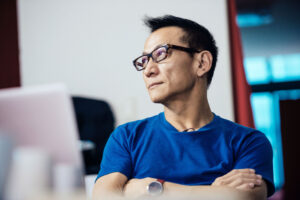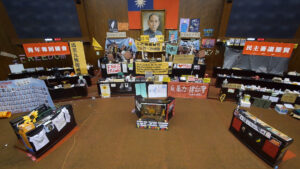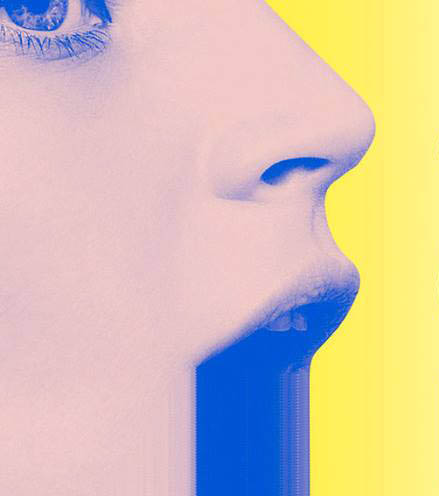In Venice (Arsenale and Giardini), from 20 April to 24 November 2024 (pre-opening 17, 18, 19 April), the Biennale Arte 2024, 60th International Art Exhibition will take place. The international exhibition project will be designed by Adriano Perosa and will have the thematic title Stranieri Ovunque – Foreigners Everywhere.

L’artista YUAN Goang-Ming, © TEDxTaipei
The title is taken from a series of works created starting in 2004 by the collective Claire Fontaine, born in Paris and based in Palermo. These works that inspired the theme of the 2024 Biennale consist of neon sculptures of various colors that bear the words “Foreigners Everywhere” in different languages. The expression was in turn taken from the name of a Turin collective of the same name that fought racism and xenophobia in Italy in the early 2000s. In this cone of light, here are the words of Adriano Pedrosa that summarize his thoughts: “The 2024 Art Biennale will speak of artists who are themselves foreigners, immigrants, expatriates, diasporics, émigrés, exiles and refugees, in particular of those who are moved between the South and the North of the world. The figure of the foreigner will be associated with that of the stranger, the estranho, the étranger, therefore the exhibition will develop and focus on the works of further connected subjects: the queer artist, who moves within diverse sexualities and genders and is often persecuted or ostracized; the outsider artist, who is on the fringes of the art world, just like the self-taught or so-called folk artist; and the indigenous artist, often treated as a foreigner in his own land. The production of these artists will be the fulcrum of the Biennale Arte and will constitute the Contemporary Nucleus of the Exhibition. (…) The exhibition will also present a Historical Nucleus made up of 20th-century works from Latin America, Africa, Asia and the Arab world. (…) Furthermore, a special section of the Historical Nucleus will be dedicated to the diaspora of Italian artists in the world during the 20th century. To those Italians who have traveled and moved abroad building their lives and professional careers in Africa, Asia, Latin America, as well as the rest of Europe, integrating and taking root with the local cultures which have often played a significant role in the development of narratives of Modernism outside of Italy”.

YUAN Goang-Ming, Dwelling, 2014. Single-channel video, colour, sound, 4’ 24’’ © YUAN Goang-Ming. Courtesy of the artist
Now, all the inhabitants of Taiwan are essentially refugees since they are the heirs of those who fled from mainland China, after a few years of civil war and following the defeat of the Kuomintang. On the Taiwan island these fugitives found a refuge and a definitive separation from the mother country and never as in this edition of the Biennale has this country responded perfectly to the guiding theme. Now these two realities (People’s Republic of China and the Republic of China or Taiwan) do not recognize each other, yet at the level of the United Nations only the former is assigned a seat, moreover with veto power (the other countries with veto power are: USA, Russia, France and Great Britain). Now Taiwan is at the center of a geopolitical struggle which sees a bloc of countries (primarily the USA, secundis the Indian subcontinent) which seeks to contain Chinese expansionism/imperialism (military and economic) seen as a danger and an attack on balances in the world.

YUAN Goang-Ming, The 561st Hour of Occupation, 2014. Single-channel video, colour, sound, 5’56’’ © YUAN Goang-Ming. Courtesy of the artist
Taiwan, a small reality at a geographical level (about 24 million inhabitants) but a real power at an economic level, has been participating in the Venice Biennale for years, so as to also use the cultural message as a lever for its feeling of being part of the Western world and of politicians who see the ups and downs of democracy as a key to governing society. Participating also means declaring the right to exist, and Taiwan’s participation also takes on an ethical value, a sense of affirmation and a right to autonomy. This is why each of his aesthetic proposals should also be read from the perspective of a declaration that marks a clear separation from mainland China and in the (right) claim to be a reality (political, economic and cultural) recognized by the whole world. Now, the Taipei Fine Arts Museum (TFAM, the museum that selects the official proposals for the Biennale) has announced that Yuan Goang-Ming will represent Taiwan, in Venice, in 2024. The exhibition will be curated by Abby Chen. Yuan Goang-Ming (b. 1965) is a pioneer of video art in Taiwan and is one of the leading Taiwanese artists active in the international media art circle. He currently holds a position as an assistant professor and chairman of the new media art department of Taipei National University of Arts. Combining symbolic metaphors with technological media, his work expresses the state of contemporary existence and explores the human mind and consciousness. His visual language, refined and poetic, is interwoven with metaphors that refer not only to the daily existence of the Taiwanese people, but transcend the fence of their own country to address a universality of intentions and feelings.

YUAN Goang-Ming, Everyday Maneuver (Zhongxiao Bridge), 2018. Single-channel video, colour, sound 5’ 57’’ © YUAN Goang-Ming. Courtesy of the artist
Already in 1998, with The Reason for Insomnia, he received the jury prize of the 1st Digital Art Festival and this video marks the beginning of a very fruitful career. Another work that highlights a more complex technical approach is the multi-channel video Disappearing Landscape from 2007, in which the moving image proposed a microbiographic approach, allowing the public to identify themselves and to find the discomforts encountered behind each single passage in living everyday life, the anxieties and apprehensions that arise from our modernity. In any case, there is no lack of references to aspects of contemporary politics, in particular the banners with the words “FREEDOM” and “FREE TAIWAN” that appear in the video The 561st Hour of Occupation, from 2014, cannot give rise to doubts: it is a cry of pain and a precise declaration of intent. Finally, in his most recent works, such as Towards Darkness and Towards Lightness, the immersive environment not only involves the visitor and pushes him towards a participatory emotionality, but also leads him to reflect on the perception and existential nature of the images.

YUAN Goang-Ming, Tomorrowland, 2018. Video ambientale presentato alla galleria TKG+, solo exhibition, 3 mar – 29 apr 2018 © YUAN Goang-Ming. Courtesy of the artist
His project for the 2024 Biennale will focus on these themes: “politics of cartography”, “wars in everyday life” and “everyday life in wars”. As it can be seen, topics of great relevance and which declare a position taken with respect to the geopolitical movements that are modifying the order of the world and of which we see the signs in the countless wars that are being fought in various parts of the world and of which Ukraine is the most striking example. All to warn us that Taiwan will be a crucial node in our near future.
Fabio Fabris
Info:
chiwengallery.com/yuan-goang-ming/

is a contemporary art magazine since 1980






NO COMMENT